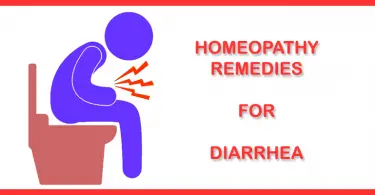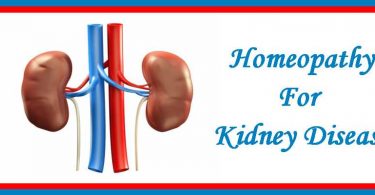The term endometriosis refers to the presence of endometrial tissue, glands and stroma outside the uterine cavity either in uterine muscle or in any other tissue or organs of the body, capable of responding to ovarian hormone.
Or
Endometriosis is the presence of ectopic endometrium in any situation outside its normal location, namely, the lining of the uterine body.
Causes of endometriosis
Most of the supposed causes of endometriosis may interact with each other to some extent. The two exceptions are iatrogenic transplantation and genetic factors. The following list traces the possible interactions:
Retrograde menstruation
- May stimulate coelomic metaplasia
- May be causes by overproduction of progesterone
Immune system factors
- A weak immune system cannot clean up cells misplaced by retrograde menstruation.
- A weak immune system cannot effectively deal with environmental toxins.
Inflammation
- May be caused by retrograde menstruation
- May be caused by the body’s attempts to deal xenoestrogen overload.
- May be caused by the body’s attempts to deal with environmental toxins.
- May be uncontrolled because of weakened immune system.
Iatrogenic origins
- Anti-inflammatory used to treat infection or inflammation may stimulate coelomic metaplasia.
- Birth control pills stimulate hormonal factors.
Lymphatic or vascular transplantation
- More likely if the immune system is weakened
- More likely if birth control pills do cause dilation of veins and movement of endometrial tissue into veins.
Coelomic metaplasia
- May be caused by retrograde menstruation
- May be caused by inflammation
- May be caused by hormonal or anti-inflammatory treatments.
- May be caused by xenoestrogen overload.
- May be caused by environmental toxins.
Hormonal factors
- Hormonal imbalance may be caused by hormonal medications
- Hormonal imbalance may be caused by xenoestrogen overload
Environmental toxins
- May weaken the immune system
- May transform cells, stimulating coelomic metaplasia
- May disturb hormonal balance
Xenoestrogen overload
- May be exacerbated by overload of naturally produced estrogen
- May stimulate coelomic metaplasia.
Clinical features of endometriosis
(a) Symptoms of endometriosis
The clinical features of endometriosis depend upon the site, extent and severity of lesion.
- Commonly it affects women in late 20’s or 30’s, affluent, infertile or who delays pregnancy for more than 5 years.
- A localized external endometriosis in the umbilicus or any scar will be associated with local nodular swelling, pain and bleeding from the lesion every month along with the menstruation.
3. The classical symptoms of pelvic endometriosis are:
(a) Secondary progressive severe dysmenorrhoea, pain starts 5-7 days before menses, becoming maximal at height of bleeding and persists during menses and thereafter.
(b) Pelvic pain,
(c) Dyspareunia,
(d) Infertility,
(e) Besides these-
I) Backache,
ii) Rectal pain and bleeding during menstruation,
iii) Dysuria, menstrual haematuria may very rarely occur.
- Painful nodule may be complained of at various sites during menses.
- Pyrexia can be present in some cases. The condition can be even asymptomatic in 30%.
B. SIGNS
- Pelvic Examination
(a) The uterus may be uniformly enlarged up to 12 weeks size. It is hard in feel and may be tender in adenomyosis of the uterus (uterine endometriosis). Just before the period ,the uterus becomes somewhat soft and tender.(The persisting soreness in the pelvis for quite some time after pelvic examination may strongly suggest endometriosis.)
(b) The uterus may be retroverted and fixed in cases of pelvic endometriosis involving the rectovaginal septum and the pouch of Douglas.
(c) In chocolate cyst of the ovary (ovarian endometriosis), unilateral or bilateral cystic ovaries may be felt through the postero-lateral fornices.
The thick nodular tender swelling or strands of fibrous tissue felt through the pouch of Douglas suggest involvement of the rectovaginal septum and the pouch of Douglas. Bluish nodules may be seen in the pouch of Douglas.
(d) In case of endometriosis of umbilicus and laparotomy scar, endometriotic nodules get enlarged and tender during menstruation.
(e) In case of endometriosis of bowel, vomiting, pain in abdomen and constipation suggesting intestinal obstruction may be found particularly during menstruation.
In some patients is the symptoms may suggest bowel malignancy. Since in endometriosis the mucosa of the gut is never involved, the condition can be differentiated by sigmodoscopy or laparotomy.
2. Per Rectum
Irregular nodular feeling or tenderness of the rectovaginal septum may be characteristic.
3. Laproscopy
Laparoscopic examination is one of the recent useful diagnostic methods for unsuspected endometriosis, particularly.
Homeopathic treatment for endometriosis
Homeopathy is one of the most popular holistic systems of medicine. The selection of remedy is based upon the theory of individualization and symptoms similarity by using holistic approach. This is the only way through which a state of complete health can be regained by removing all the sign and symptoms from which the patient is suffering. The aim of homeopathy is not only to treat endometriosis but to address its underlying cause and individual susceptibility. As far as therapeutic medication is concerned, several remedies are available to treat endometriosis that can be selected on the basis of cause, sensations and modalities of the complaints. For individualized remedy selection and treatment, the patient should consult a qualified homeopathic doctor in person. There are following remedies which are helpful in the treatment of endometriosis:
Aconite, Arsenic Album, Belladonna, Bryonia, Cimicifuga, Gelsemium, Iodium, Pulsatilla, Sabina, Secale Cor, Sepia, Silicea, Aurum Mur, Calcaria Carb, Carbolic Acid, Conium, Hydrastis, Lachesis, magnesia Mur, Thuja, Cantharis, china, Hepar Sulph, Kali Carb, Lilium Tig, Medorrhinum, Rhus Tox, Platina, Phosphoric Acid, Sulphur, Nux Vomica, and may other medicines.
Endometriosis Cases Cured with Homeopathic Medicine
Endometriosis in a Woman of 51 – by Petra Cihlářová
A Case of Endometriosis – by Kiran Shanbag
A Case Of Endometriosis and Secondary Infertility – by Zaklina Dodig-Soklic
A Case of Endometriosis – by Mira Beattie
A Case of Endometrioma Responds to Homoeopathy – by Sandeep Kumar Mishra




Thanks for this article, especially homeopatic part is intereseting.